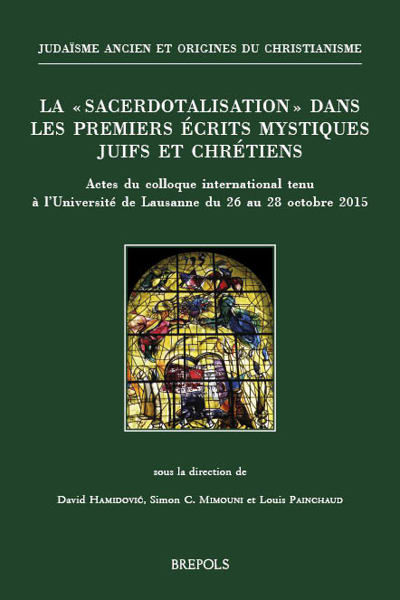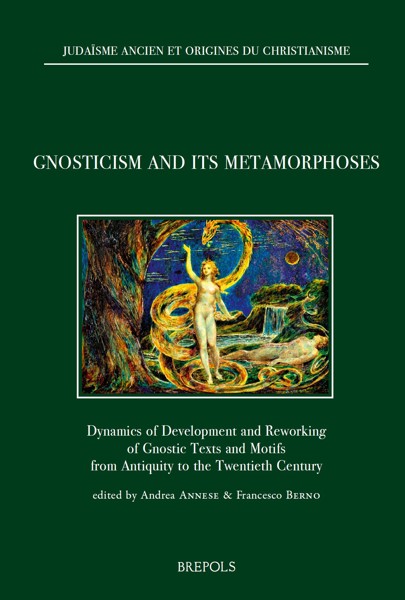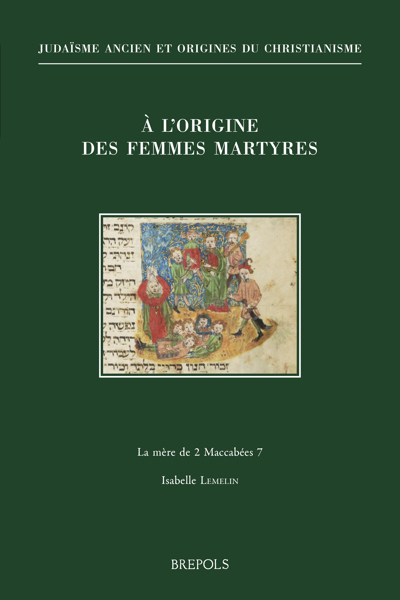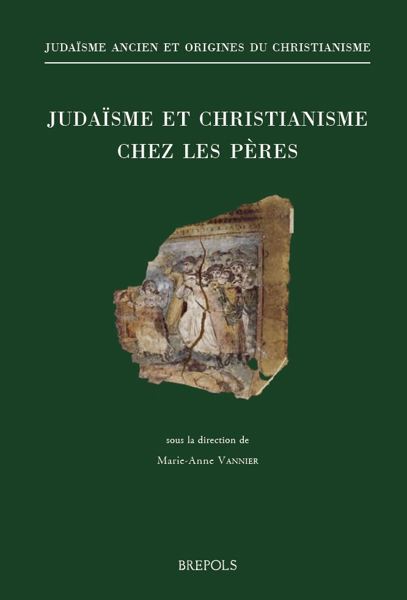
Gnosticism and Its Metamorphoses
Dynamics of Development and Reworking of Gnostic Texts and Motifs from Antiquity to the Twentieth Century
Andrea Annese, Francesco Berno (eds)
- Pages: 252 p.
- Size:156 x 234 mm
- Illustrations:1 b/w, 2 tables b/w.
- Language(s):English, Coptic, Greek
- Publication Year:2025
- € 80,00 EXCL. VAT RETAIL PRICE
- ISBN: 978-2-503-61699-5
- Paperback
- Available
- € 80,00 EXCL. VAT RETAIL PRICE
- ISBN: 978-2-503-61700-8
- E-book
- Available
The essays gathered in this volume study selected examples of the development and reworking of Gnostic texts and ideas from antiquity to the twentieth century
Andrea Annese teaches History of Christianity at the University of Bologna. He has published on the Gospel of Thomas, Gnosticism, Early Christianity, Jesus Traditions. He is co-editor of the first complete Italian translation of the Nag Hammadi Codices (2024).
Francesco Berno teaches History of Christianity at Sapienza University of Rome. His research interests include Gnosticism, Early Christianity, Apocrypha. He is co-editor of the first complete Italian translation of the Nag Hammadi Codices (2024).
The complex and multifaceted religious phenomenon called Gnosticism continues to fascinate both specialists and the wider audience. This volume explores the “metamorphoses” of Gnosticism, through the analysis of selected examples. Late antique Gnostic groups and schools of thought developed and even changed their ideas when interacting with other religious groups and with various sources. Confrontation and polemics with the so-called “Great Church” and with other Christian groups were crucial to doctrinal elaboration of all parties involved. On a different side, one can trace the metamorphoses of Gnostic ideas through the centuries, as these ideas influenced, and were reinterpreted by, other religious and cultural traditions and currents, from Manichaeism to medieval dualistic movements, modern esotericism, and even contemporary literature.
The essays gathered in this volume focus on two main topics, namely how ancient Gnostic groups developed their doctrines by interpreting and reworking their wide range of sources (Jewish, early Christian, Platonic ones, etc.), and how ancient Gnostic ideas and motifs survived – with new forms – in later philosophical, religious, and literary works, up to the twentieth century.
The volume consists of three sections, the first being dedicated to early anti-Gnostic controversy in texts embedding Jewish-Christian and Petrine traditions and using Gnostic motifs for polemical purposes; the second to some treatises from the Nag Hammadi corpus and other Gnostic manuscripts (plus Epiphanius’ Panarion) so as to provide fresh insights into late antique Gnostic texts and groups; and the third to three case studies of the modern reception and reworking of Gnostic writings and ideas.
Introduction. The Metamorphoses of Gnosticism (Andrea Annese & Francesco Berno)
Gnostic Motifs and Anti-Gnostic Polemics
The Coptic Act of Peter (P. Berol. 8502.4): A “Misplaced” Composition? (Francesco Berno)
The Pseudo-Clementines as Witnesses of “Gnostic Jewish-Christianity”? Assessing Ancient Christian Discourses on Religious Knowledge (Philippe Therrien)
Gnostic Texts and Groups in Late Antiquity
Notes and Subscriptions of the Nag Hammadi Codices. Questions of Definition, Problems of Interpretation (Marta Addessi)
The Insertion of Five Doxologies in the Holy Book of the Great Invisible Spirit (NHC III.2 & IV.2) (Elena Sol)
Mapping Valentinians in Fourth-Century Egypt according to Epiphanius of Salamis (Panarion 31.7.1) (Przemysław Piwowarczyk)
The Anonymous Writing in the Bruce Codex. Similarities and Differences with Other “Gnostic” Texts (Anne Pasquier)
The Christology and Soteriology of the Pistis Sophia Texts. Connections with Mainstream Christianity and “Eastern” Valentinianism (Andrea Annese)
Reception of Gnosticism in the 19th and 20th Centuries
The Reception and Reimagination of Ancient Gnosticism within the Église Gnostique de France. Simon Magus, a Case Study (Alberto Alfredo Winterberg)
A Decadent Reading of Gnosticism and Early Christianity. Simon Magus in Boito’s Nerone (Chiara Ombretta Tommasi)
Myth, Heresy, Gnosis: Mario Pomilio’s Fifth Gospel and a Rewriting of Apocryphal Literature (Maria Fallica)




